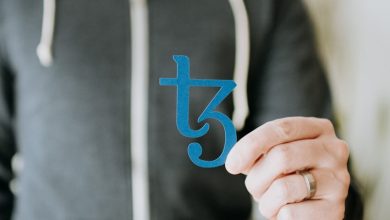What Are Flash Loans and How Do They Work?

- Understanding the concept of flash loans
- The rise of flash loans in the DeFi space
- Exploring the benefits and risks of flash loans
- How smart contracts enable the execution of flash loans
- Case studies of successful flash loan transactions
- Regulatory challenges surrounding the use of flash loans
Understanding the concept of flash loans
Flash loans are a relatively new concept in the world of decentralized finance (DeFi) that have gained popularity due to their unique characteristics and potential for high returns. In simple terms, a flash loan is a type of loan that is borrowed and repaid within the same transaction block on a blockchain. This means that the borrower must have the borrowed amount plus the fees required to execute the loan in the same smart contract transaction.
One of the key features of flash loans is that they do not require any collateral for borrowing, unlike traditional loans. This is made possible by the instantaneous nature of the transactions, which eliminates the need for trust between the lender and the borrower. As a result, flash loans offer a high level of flexibility and accessibility to users who are looking to capitalize on arbitrage opportunities or execute complex trading strategies.
Flash loans are typically used by experienced traders and developers who have a deep understanding of the DeFi ecosystem and the smart contracts that govern it. These users can leverage flash loans to borrow large sums of cryptocurrency in order to make quick trades or exploit price discrepancies across different platforms. However, it is important to note that flash loans come with a high level of risk, as they are susceptible to market volatility and potential security vulnerabilities.
The rise of flash loans in the DeFi space
Flash loans have been gaining popularity in the decentralized finance (DeFi) space due to their unique capabilities. These loans allow users to borrow funds without the need for collateral, as long as the borrowed amount is returned within the same transaction. This has opened up new opportunities for traders and developers to execute complex financial strategies without the constraints of traditional lending processes.
One of the main reasons for the rise of flash loans is their ability to be executed quickly and efficiently on the blockchain. This speed is crucial in the fast-paced world of DeFi, where opportunities arise and disappear in a matter of seconds. By leveraging flash loans, users can capitalize on these opportunities without having to wait for traditional loan approval processes.
Another factor contributing to the popularity of flash loans is their low cost compared to traditional loans. Since there is no need for collateral, users can save on fees and interest rates typically associated with borrowing funds. This cost-effectiveness has made flash loans an attractive option for those looking to maximize their profits in the DeFi space.
With the rise of flash loans, the DeFi ecosystem has seen a surge in innovative financial products and services. Developers are constantly exploring new ways to leverage flash loans for arbitrage, collateral swaps, and other advanced strategies. As the DeFi space continues to evolve, flash loans are expected to play a significant role in shaping the future of decentralized finance.
Exploring the benefits and risks of flash loans
Flash loans provide a unique opportunity for borrowers to access a large sum of funds without requiring collateral. This can be extremely beneficial for those looking to quickly take advantage of arbitrage opportunities or execute complex trading strategies. However, with these benefits come inherent risks that borrowers must be aware of before taking out a flash loan.
One of the main benefits of flash loans is the ability to execute transactions without the need for collateral. This can be particularly advantageous for traders who need quick access to funds but do not have the necessary assets to secure a traditional loan. Additionally, flash loans can be used to capitalize on market inefficiencies and generate profits in a short amount of time.
On the other hand, flash loans come with significant risks that borrowers must consider. Since these loans are uncollateralized, there is a high level of risk involved for both the borrower and the lender. If the borrower is unable to repay the loan within the specified timeframe, they risk losing the funds borrowed as well as facing potential legal consequences.
Overall, while flash loans offer a unique opportunity for quick access to funds and potential profits, it is important for borrowers to carefully consider the risks involved. By understanding the benefits and risks of flash loans, borrowers can make informed decisions about whether or not to take out a flash loan for their financial needs.
How smart contracts enable the execution of flash loans
Smart contracts play a crucial role in enabling the execution of flash loans within the decentralized finance (DeFi) ecosystem. These self-executing contracts are coded to automatically execute specific actions when predetermined conditions are met. In the case of flash loans, smart contracts facilitate the borrowing and repayment of funds within a single transaction on the blockchain.
By leveraging smart contracts, users can access flash loans without the need for intermediaries such as banks or lending platforms. This process is made possible by the trustless nature of blockchain technology, which ensures that transactions are secure and transparent. Smart contracts ensure that all parties involved in a flash loan transaction adhere to the agreed-upon terms, eliminating the need for trust between borrowers and lenders.
Furthermore, smart contracts enable the seamless execution of flash loans by automating the entire process. Once a borrower requests a flash loan, the smart contract verifies the availability of funds and executes the loan if the conditions are met. This automation not only streamlines the borrowing process but also minimizes the risk of default, as the funds are instantly returned to the lender at the end of the transaction.
Overall, smart contracts are instrumental in making flash loans a viable option for users looking to access liquidity quickly and efficiently within the DeFi space. By leveraging the capabilities of smart contracts, borrowers can execute complex financial transactions with ease, without the need for traditional intermediaries. This decentralized approach to lending and borrowing is revolutionizing the financial industry and opening up new possibilities for users around the world.
Case studies of successful flash loan transactions
There have been several successful flash loan transactions that have gained attention in the cryptocurrency community. These case studies demonstrate the potential of flash loans to generate significant profits in a short amount of time.
One notable example is the exploit of a decentralized finance (DeFi) protocol that resulted in a flash loan user making a profit of over $1 million in a single transaction. By taking advantage of a vulnerability in the protocol, the user was able to borrow a large sum of money, manipulate the price of a token, and then repay the loan with the profit earned.
Another successful flash loan transaction involved arbitrage trading across different cryptocurrency exchanges. The user borrowed a substantial amount of funds, purchased a digital asset at a lower price on one exchange, and sold it for a higher price on another exchange within the same transaction. This resulted in a significant profit for the user without the need for any upfront capital.
Overall, these case studies highlight the innovative opportunities that flash loans present for savvy cryptocurrency traders. By leveraging the power of smart contracts and decentralized platforms, users can execute complex financial strategies without the need for traditional lending institutions. As the popularity of flash loans continues to grow, we can expect to see more successful transactions and creative use cases emerge in the future.
Regulatory challenges surrounding the use of flash loans
Regulatory challenges surrounding the use of flash loans are a growing concern in the financial industry. As these loans have gained popularity, regulators are struggling to keep up with the rapidly evolving landscape of decentralized finance. One of the main issues is the lack of oversight and accountability in the space, which can lead to potential misuse of flash loans for illicit activities.
Another challenge is the difficulty in tracing the source of funds in flash loan transactions. Due to the decentralized nature of these loans, it can be challenging for regulators to identify the parties involved and ensure compliance with anti-money laundering and know your customer regulations. This lack of transparency raises concerns about the potential for money laundering and other illegal activities to take place under the guise of legitimate financial transactions.
Furthermore, the speed and complexity of flash loan transactions pose significant challenges for regulators in terms of monitoring and enforcing compliance. With transactions happening in a matter of seconds across multiple platforms, regulators may struggle to keep up with the volume and intricacy of these transactions. This can create loopholes for bad actors to exploit the system and evade detection.



